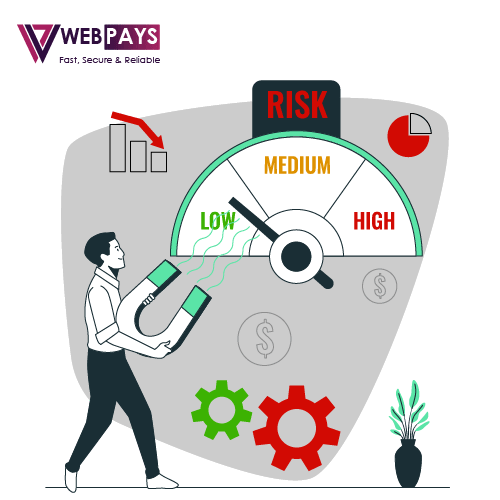Deep Understanding of High Risk Payment Processing in 2024

In 2024, the landscape of high risk payment processing is more dynamic and complex than ever. As businesses in high-risk industries continue to grow and evolve, understanding the intricacies of high-risk payment processing is crucial for success. From navigating stringent regulations to implementing advanced fraud detection mechanisms, the ability to manage high-risk transactions effectively can make or break a business. This article delves into the critical aspects of high-risk payment processing in 2024, offering valuable insights into the latest trends, technologies, and strategies that can help businesses stay ahead in this challenging yet lucrative market. Get ready to explore how a deep understanding of high risk payment can empower your business to thrive in the fast-paced digital economy. Read on.
What is High-Risk Payment Processing?
High-risk payment processing refers to the management of financial transactions for businesses that operate in industries deemed high risk by banks and financial institutions. These industries often include Casino & iGaming, Adult entertainment, Online gaming, Fantasy sport, Tech Support, Subscription services, Cryptocurrency exchanges, etc. These businesses face higher scrutiny due to the increased likelihood of fraud, chargebacks, and regulatory issues. As a result, they require specialized payment processors capable of handling these risks.
Key Features of High-Risk Payment Processing
Enhanced Fraud Protection
One of the most important features of high-risk payment processing is enhanced fraud protection. This involves the use of advanced technologies such as machine learning algorithms, AI-based fraud detection systems, and real-time transaction monitoring to identify and prevent fraudulent activities. These systems analyze transaction patterns and flag suspicious activities, thereby reducing the risk of fraud.
Chargeback Management
Chargeback management is another crucial feature. High risk businesses are more prone to chargebacks, which can be costly and damaging to their reputation. Effective chargeback management includes:
- Chargeback alerts: Immediate notifications when a chargeback is initiated.
- Dispute resolution services: Assistance in challenging unjust chargebacks.
- Chargeback prevention tools: Techniques to reduce the likelihood of chargebacks, such as clear billing descriptors and robust customer support.
Multi-Currency Support
Given the global nature of many high risk industries, multi-currency support is essential. High risk payment processors facilitate transactions in various currencies, enabling businesses to expand their reach and cater to an international clientele. This feature also includes competitive exchange rates and automated currency conversion, simplifying the financial management for businesses.
High Approval Rates
High-risk payment processors often boast high approval rates for transactions. Traditional payment processors may decline transactions from high risk industries due to the perceived risk. Specialized processors, however, have the expertise and systems in place to approve a higher percentage of transactions, ensuring that businesses do not lose revenue unnecessarily.
Trends in High-Risk Payment Processing for 2024
Increased Regulatory Scrutiny
With the rise of digital currencies and online transactions, regulatory bodies worldwide are tightening their oversight. Businesses in high risk industries must stay updated on regulatory changes and ensure compliance to avoid hefty fines and legal issues. High-risk payment processors assist by providing compliance support and keeping businesses informed of relevant regulatory developments.
Adoption of Blockchain Technology
Blockchain technology is being increasingly adopted in high risk payment processing. Blockchain provides a decentralized, transparent, and secure way to handle transactions. This technology helps reduce fraud, enhance security, and streamline payment processes. Many high-risk payment processors are now integrating blockchain to offer better security and efficiency.
AI and Machine Learning
The use of AI and machine learning in payment processing is growing. These technologies help in predictive analysis, fraud detection, and customer behavior analysis. AI-driven tools can predict potential fraud before it happens, allowing businesses to take proactive measures. Additionally, machine learning algorithms continuously improve by learning from transaction data, making fraud detection more accurate over time.
Mobile Payment Solutions
The rise of mobile commerce has led to an increased demand for mobile payment solutions. High-risk payment processors are now offering mobile-friendly payment options to cater to the growing number of customers who prefer to make transactions via their smartphones. This includes mobile wallets, QR code payments, and NFC (Near Field Communication) payments.
Enhanced Customer Experience
Customer experience is becoming a significant focus area. High-risk payment processors are investing in technologies and services that enhance the overall payment experience for customers. This includes faster transaction processing times, seamless integration with e-commerce platforms, and improved customer support services.
Choosing The Right High-Risk Payment Processor
Selecting the right payment processor is crucial for business success. And for that there are several essential points that you should remember while looking for a high risk payment processor. These points are as follows:
- Security Measures: Security should be the foremost thing to consider when it is about choosing the right high-risk payment processor. Ensure that the payment processor uses state-of-the-art security measures to protect against fraud and data breaches. Look for processors that offer PCI DSS compliance, encryption, and tokenization.
- Reputation and Reliability: Research the payment processor's reputation and reliability. Look for reviews & testimonials from other businesses in your industry. A processor with a proven track record in handling high risk transactions is preferable.
- Fee Structure: Understand the fee structure of the payment processor. High-risk payment typically involves higher fees due to the increased risk. Ensure that the fees are transparent and justified by the services provided.
- Customer Support: A reliable customer support is very crucial when it comes to considering the factors to choose the right payment processor. Choose a payment processor that offers 24/7 customer support to address any issues that may arise promptly.
Conclusion
In 2024, high risk payment processing continues to evolve, driven by advancements in technology and increasing regulatory demands. Businesses in high risk industries must stay informed and choose payment processors that offer robust security, high approval rates, multi-currency support, and excellent customer service. By leveraging these features, businesses can navigate the complexities of high risk transactions and achieve sustainable growth.